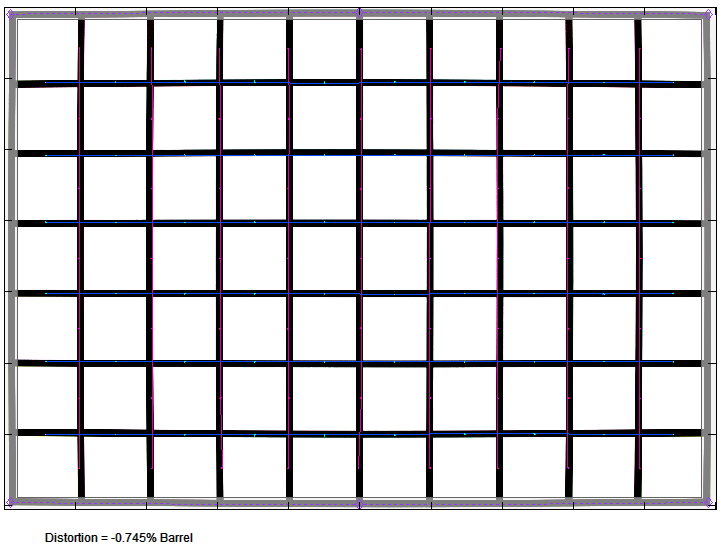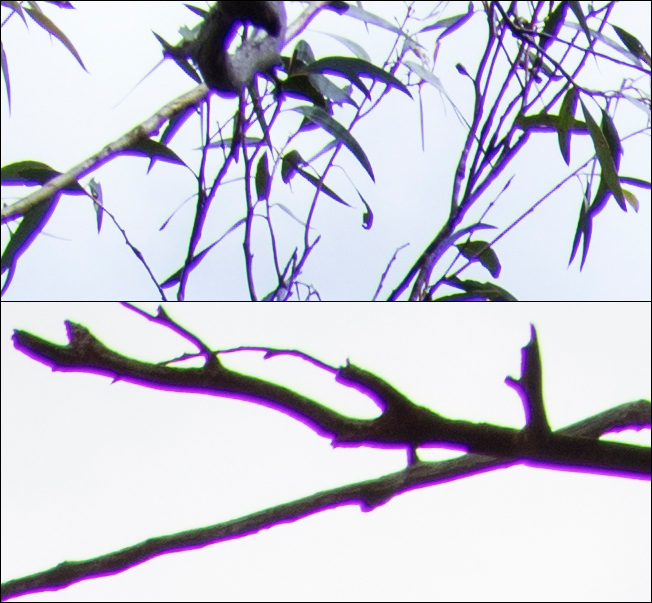|
Tamron SP 35mm f/1.8 Di USD VC ( Canon EOS ) - Review / Test - Analysis |
|
Lens Reviews -
Canon EOS (Full Format)
|
|
Page 2 of 3

Distortion
The Tamron SP 35mm f/1.8 Di VC USD produces a slight barrel distortion of ~0.7% which is pretty good for a moderate wide angle lens.

Vignetting
Very fast lenses usually suffer from pronounced vignetting at large apertures, and the new Tamron lens is no exception to this rule here. Wide open, there is a heavy amount of light fall-off (2EV) towards the corners. As usual, stopping down reduces the amount of vignetting considerably even at f/2.2. From f/4 onward it should no longer be an issue for most scenes.

MTF (resolution)
The Tamron delivered decent results in the MTF lab. Please note that the used test camera (Canon EOS 5Ds R thus @ 50 megapixel) is a stress test for all lenses. The good news is that the center is great even at max. aperture and the "near center" quality is also impressive. The border and corner quality is rather dismal here though. Stopping down to f/2.2 boosts the borders whereas the corners remain soso at best. f/2.8 lifts the corners to good levels finally. The peak performance is reached at f/4 with an outstanding center and a very good quality in the outer image field. Diffraction is limiting the quality from here with a really noticeable impact from f/11 onward.
The field curvature is low. The centering quality of the tested sample was Okay (albeit not great).
Please note that the MTF results are not directly comparable across the different systems!
Below is a simplified summary of the formal findings. The chart shows line widths per picture height (LW/PH) which can be taken as a measure for sharpness.
If you want to know more about the MTF50 figures you may check out the corresponding Imatest Explanations

Chromatic Aberrations (CAs)
Chromatic aberrations (color shadows at harsh contrast transitions) are very well controlled showing readings around an average pixel width of 0.8px at the image borders. This is impressive on a 50 megapixel sensor.

Bokeh
One of the primary usage scenarios for a large aperture lens is to isolate the main subject from the fore- & background via a shallow depth-of-field. The quality of the bokeh (out-of-focus blur) is of major significance for the overall impression of such images.
The Tamron SP 35mm f/1.8 Di VC USD provided mixed results within the scope of a moderate wide-angle lens. The general out-of-focus blur is quite smooth both in the critical image background as well as in the foreground.
 Unfortunately out-of-focus highlights are pretty bad. As you can see below they suffer from a substantial amount "onion rings". This is usually caused by aspherical elements (the Tamron has 2 of them). There's no outlining effect and the circular disc shape remains intact even at f/2.8 but this doesn't rescue the situation here really.
Unfortunately out-of-focus highlights are pretty bad. As you can see below they suffer from a substantial amount "onion rings". This is usually caused by aspherical elements (the Tamron has 2 of them). There's no outlining effect and the circular disc shape remains intact even at f/2.8 but this doesn't rescue the situation here really.

Purple Fringing
As you will see in the sample image section, the weather wasn't really perfect at the time when we were out there shooting. Now an overcast sky is tricky for all lenses but the Tamron suffered more than most here. Below are some sample crops of areas showing extreme contrast transitions. These images were taken around f/8. Yet despite this very moderate aperture, the images show an excessive amount of purple fringing to a degree that we'd call very poor for a 35mm prime lens.

Bokeh Fringing
Bokeh fringing is a color fringing effect on the focus axis. It can be observed as greenish halos towards the background and purple halos at the front of the focus field. Most ultra-fast aperture lenses suffer from this effect although they are exceptions like the brand new Canon EF 35mm f/1.4 USM L II. The optical design of the Tamron doesn't solve this issue though. The colored halos are clearly visible at f/1.8 and even at f/2.8. Traces remain at f/4.
|